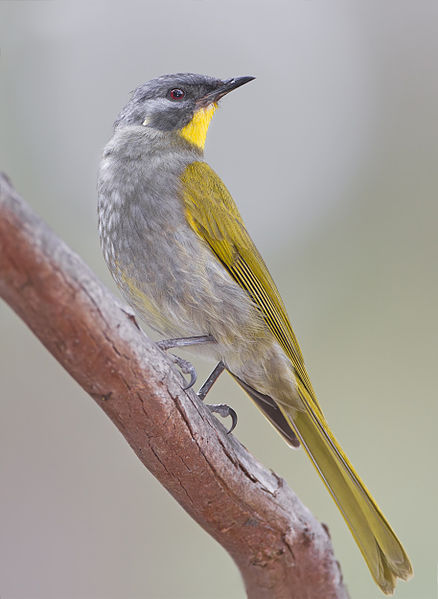Colours
Distinguishing features
It is a medium sized honeyeater with a relatively long tail. The plumage is bright olive green above, with a silver-grey crown, face, and underbelly contrasting with a distinctive bright yellow chin and throat. There is a small yellow ear-patch and the wing feathers are outlined with yellow. The bill is black and the eye is a deep ruby red. Females are smaller than males. Juvenile birds are very similar to adults, but duller. (Wikipedia)
Size
- From 14 cm to 17 cm (Length of specimen)
Wingspan
- Wingspan data is not yet available.
Synonyms
Distribution

©Atlas of Living Australia: Australian distribution: Yellow-throated Honeyeater (Lichenostomus flavicollis)
Distribution and habitat preferences
It is endemic to Australia's island state of Tasmania. The Yellow-throated Honeyeater is common and widespread on the mainland of Tasmania, King Island and the Furneaux Group.
The species is common and widespread, and is not considered threatened. Its natural habitat is temperate forests, woodlands and coastal scrub and heath. Both wet and dry sclerophyll forests are the preferred habitats, with other habitats like alpine eucalypt woodland and open eucalypt woodland, cool rainforest, coastal heathlands, and shrublands also being used. They may also be found in golf courses, orchards, parks and gardens. (Wikipedia)
Diet
The Yellow-throated Honeyeater feeds mainly on arthropods, also taking some nectar, and occasionally feeds on fruit or seeds. The species forages from the canopy down to the ground, usually singly or in pairs. Food is obtained by gleaning from trunks, branches and the ground, by probing between loose bark and the trunks and by occasional sallying flights. More rarely flowers are investigated for insects and occasionally nectar. (Wikipedia)
